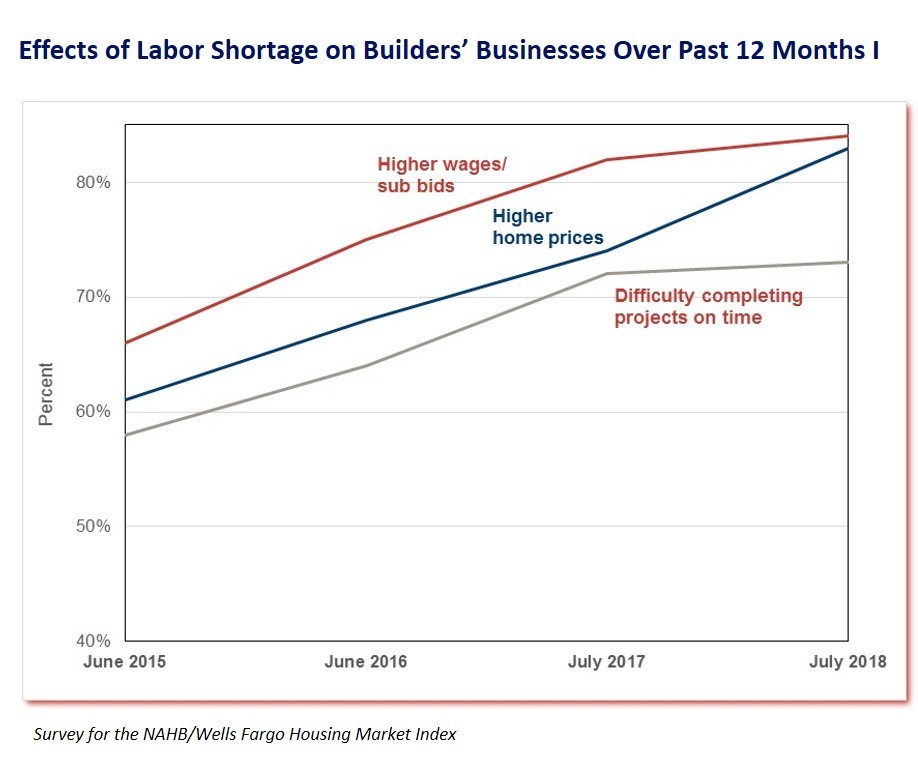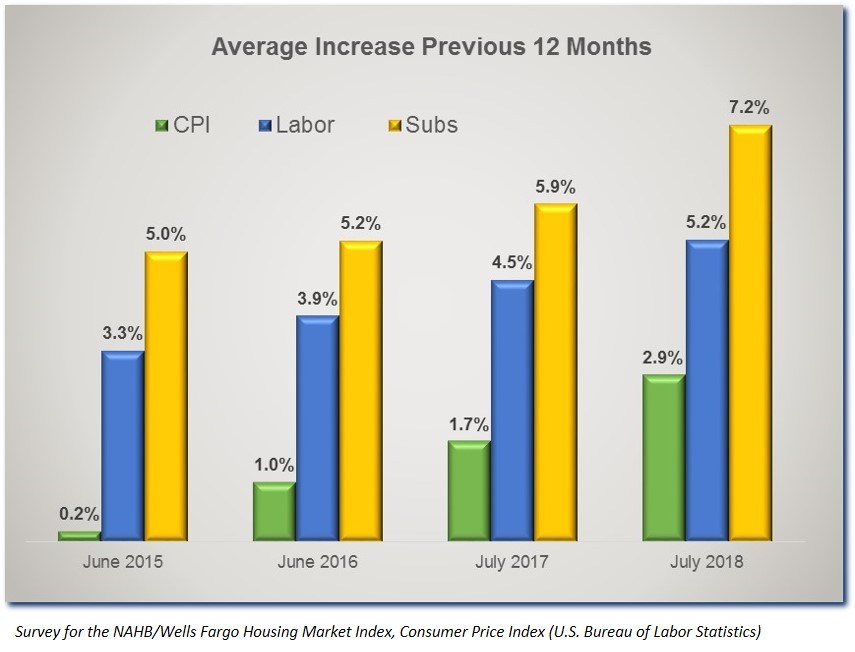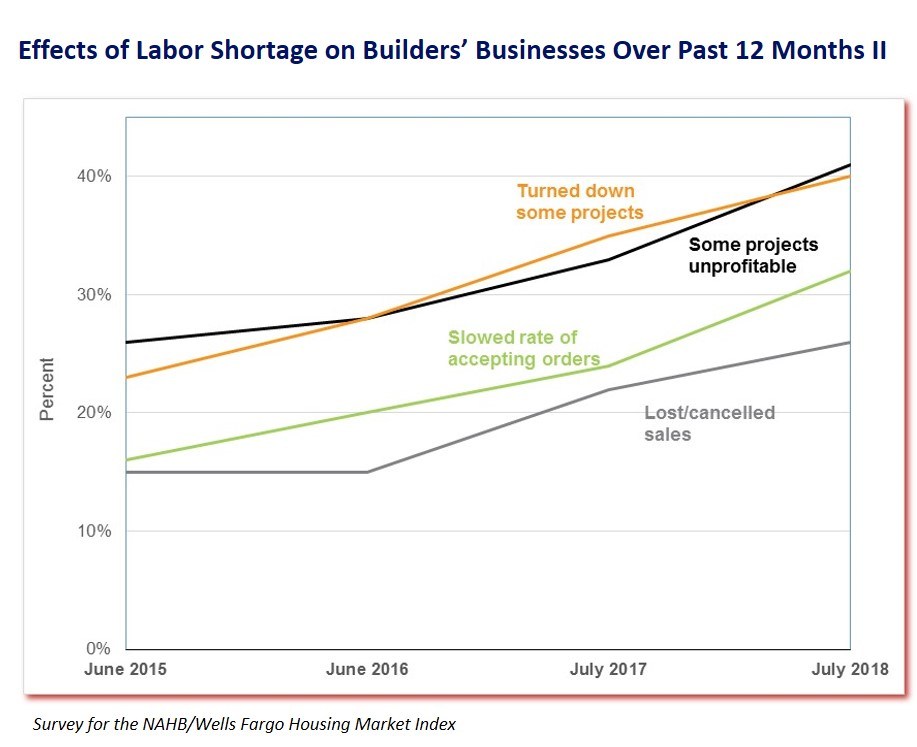Last week we summarized a report from the National Association of Home Builders on the acute labor shortages builders are indicating in responses to the NAHB/Wells Fargo monthly Housing Market Index survey. The July version asked a set of special questions about the availability of both employed labor and subcontractors in each of 15 different trades. That survey also asked builders about the effects the shortages were having on their businesses.
Paul Emrath again examines on the survey results in NAHB's Eye on Housing blog and says the most widespread effects are on wages. Eighty-four percent said they were having to pay higher wages and take higher bids from subcontractors, and 83 percent said this has forced them to raise home prices. Seventy-three percent said the shortages were making it difficult to complete projects on time.

Emrath says these three responses have consistently ranked as the top answers regarding labor and subcontractor shortages since NAHB began asking the questions in 2015 and have become even more common over time. The steepest upward trend has been in the share of builders saying the labor/sub shortages are causing higher home prices. That response increased by 22 percentage points between 2015 and 2018, to the point where it is now nearly tied with higher wages/sub bids as the most widespread effect of the shortages.
The survey also asked how much labor and subcontractor costs for building the same house have increased over the previous 12 months. The chart below shows the average responses and compares them to overall inflation as measured by the Consumer Price Index over the same 12-month period.

The above chart shows that inflation overall has been on the rise since 2015 and has been consistently outpaced by the cost of labor. In addition, the cost of subcontractors has risen even faster than the wages paid to those directly employed by builders. Over the same time period this year overall inflation is up 2.9 percent, but labor costs increased by 5.2 percent, and subcontractor costs by 7.2 percent. This information is consistent with Emrath's points in his earlier article; work performed by subs typically represents three quarters of construction costs and the incidence of shortages was higher for subcontractors than for direct labor in 14 of the 15 occupations.
Other effects of labor and subcontractor shortages, while less common, are still increasing. For example, the share of builders indicating that the shortages have slowed the rate they accept incoming orders doubled between 2015 and 2018 (from 16 to 32 percent). Even the least common of the effects-lost or cancelled sales-was up to 26 percent in the latest survey, suggesting that the shortages are having a significant impact on production levels.








